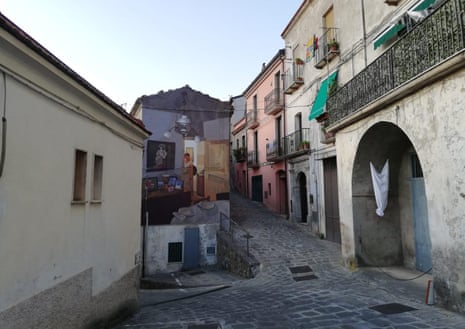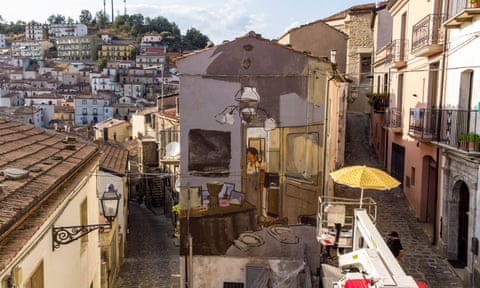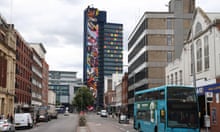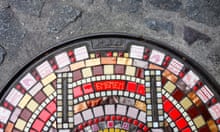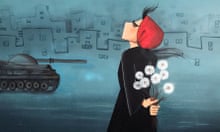Jadhav*, 18, from Bangladesh, arrived in Italy 10 months ago, but is still haunted by memories of his journey with people smugglers across the Mediterranean Sea.
“There were 156 people packed into a small boat. There were women and children,” says Jadhav in broken Italian and Bengali translated on a smartphone app. “Waves were coming over the side. People were weeping. There was no hope of survival.”
Determined to seek a better life in Europe, Jadhav had flown to Egypt via Dubai before reaching Libya by land. He worked for a year in Tripoli – in a supermarket, as a welder and laying roads – where he was jailed for 11 days, tortured, and released only after his parents sent ransom money.
Jadhav gazes up at a huge artwork being painted on a street corner ahead, his eyes glazing over. “The conditions were terrible,” he says of the Libyan prison. “Sometimes we were given just one bread bun and a small bottle of water each day.”
Thousands of young migrants in Italy have similar stories to tell. As the pandemic drives global migration, 39,000 have reached the country by boat since the start of the year – double the number during the same period 12 months ago. Unaccompanied minors – under-18s who arrive without their parents – account for a nearly a sixth of the total. Experts predict the turmoil in Afghanistan could result in more arrivals.

With Italy plagued by persistent unemployment and government resources for integration stretched, many newcomers to the country, the EU’s biggest migration hotspot, face hardship.
But one innovative scheme is helping dozens forge brighter futures. Launched in 2019, the city of Matera’s Atelier d’Arte Pubblica (MAAP) is one of the few initiatives in Italy using public art to integrate newcomers to the country. For its most ambitious project yet, Barcelona-based street artist Mohamed L’Ghacham joined forces with migrants in three towns in Basilicata, a rugged region in southern Italy, for three consecutive projects over 17 days. The objective was to transform one building in each location with a towering mural.
In San Chirico Raparo, L’Ghacham worked with a group of 11 unaccompanied minors housed in a local centre. While the artist painted the mural alone, he involved the young migrants in the creative process, asking them to propose objects to include in the design and teaching them how to mix paint. The gradually evolving mural became a focal point, turning a quiet street corner in the usually sleepy town, which has a population of just 1,000, into a lively hub. Project organisers led communication exercises with small groups of young migrants, allowing the participants to discuss their pasts; curious residents drawn by the spectacle joined the conversation.

The wall’s bright colours contrasted starkly with tales of the participants’ dark pasts. Nakia*, 17, set off from Egypt aged 10 and spent six years on the road, working in Turkey, Greece and Bosnia-Herzegovina, and crossing the border between Croatia and Slovenia in a lorry. Sulayman*, a 15-year-old Gambian, worked in Mali and Niger before moving to Libya.
The north African country is infamous among migrants for its corrupt, brutal police. Many live in fear of arrest while working to save money for boat crossings, which can cost as much as €5,000 (£4,300). Sulayman, who was jailed four times, points to a scar from where he says a guard slashed his wrist. Folding down his collar, Jadhav reveals cigarette burns from his time in prison.
To reach Italy from Libya, migrants must cross a 180-250-mile stretch of the central Mediterranean, the deadly migration route that has claimed 1,095 lives so far this year, according to the International Organization for Migration.
“When you cross the Mediterranean, there are three outcomes,” says Sulayman, whose own journey took four days. “Either you make it to Italy, you get caught by the Libyans, or you drown.”
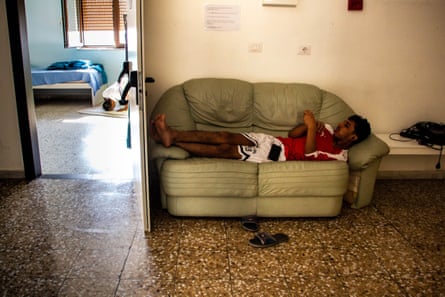
Once in Italy, unaccompanied minors are automatically protected until they are 18. Placed in housing projects across the country, they receive language tuition, legal and psychological support, and vocational training.
By the time they reach adulthood, many have already been awarded international protection of one to five years, buying time to find contracted work and convert stay permits into work visas. But with nearly half of all young people in Italy’s south unemployed, many migrants are forced on to the hidden market, says Stefania Congia, director of immigration and integration at the ministry of labour and social policies.
Meanwhile, Italy’s housing projects are reaching saturation point. Just 5% of spaces for unaccompanied minors are available, according to the National Association of Italian Municipalities, which helps run the system. Racing to keep pace with arrivals, the interior ministry announced funding for 96 new housing projects for minors in July and August, expanding the existing network by two-thirds. In May, Mario Draghi, Italy’s prime minister, renewed calls for a new, “humane” EU-wide system for managing the influx of migrants.

MAAP’s organisers believe rooting migrants into local communities improves their job prospects and social wellbeing. Founded by Stefania Dubla, a former curator at Paris’s Musée d’Orsay, the initiative is taking off and will be rolled out beyond the confines of Basilicata next year, in the Emilia-Romagna, Lazio and Puglia regions.
L’Ghacham’s mural in San Chirico Raparo has injected life into the dusty street below. The design depicts a woman standing behind an open door, a table in the foreground laid for dinner. Objects selected by the unaccompanied minors – a boat, a traditional African drum and a photo of the Faisal mosque in Islamabad, Pakistan – are shown positioned on a chest of drawers.
As young migrants and Italian children watch the mural take shape, L’Ghacham shows some how to mix paint. Others take part in an activity that involves picking cards from a pack and discussing the words written on them. Residents emerge from their homes to offer fruit, coffee and limoncello.
For Nakia, a budding artist, the project provided creative inspiration for a design he painted on his bedroom wall. For others, L’Ghacham’s mural symbolises their entry into Italian society. “The beauty of this scheme is that it brings people together,” says Karim*, 17, from Egypt. “We may not stay in San Chirico for ever, but now we have left our mark.”
*Names have been changed
